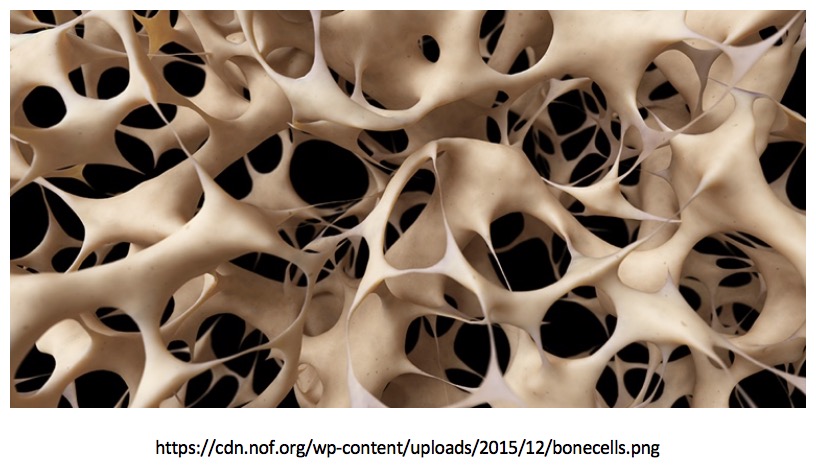Bone is living tissue that is always renewing and repairing itself from everyday wear and tear. Osteoporosis is a disease of the bone that happens when the body loses too much bone or makes too little bone. As bone becomes more brittle people are at a greater risk of fractures. Males and females achieve peak bone mass in their early 20s and by their mid-30s bone mass begins to fall naturally.
Did you know?
- 2 million Canadians have osteoporosis?
- at least 1 in 3 women and 1 in 5 men will break a bone due to osteoporosis
As women age, hormone levels change; specifically, as estrogen levels decrease, bone loss increases. This does not mean that osteoporosis is a female disease. In fact, 25% of hip fractures caused by osteoporosis occur in men. Proportionately, men are more likely to die in the year after breaking a hip compared to women.
How can you take care of your bones?
Weight bearing exercises help to build bone strength. Weight bearing exercises are those that require you to work against gravity, such as walking, jogging, climbing stairs, playing tennis and dancing. Resistance training, such as weight lifting, can also help strengthen bones.
A diet that is high is vitamin D and calcium is important for bone health. There are not many food sources of vitamin D, therefore, routine supplementation is often required. Calcium can be obtained from foods, such as dairy products or calcium-fortified products. However, if you do not get enough calcium in your diet supplementation may be needed.
Are there treatments available for osteoporosis?
There are medications available to help treat osteoporosis and decrease the risk of fractures. These medications can help:
- slow down the breakdown of bone
- rebuild bone
- Osteoporosis is more common over the age of 5o. However, focusing on your bone health at a younger age can help protect against osteoporosis later in life.

